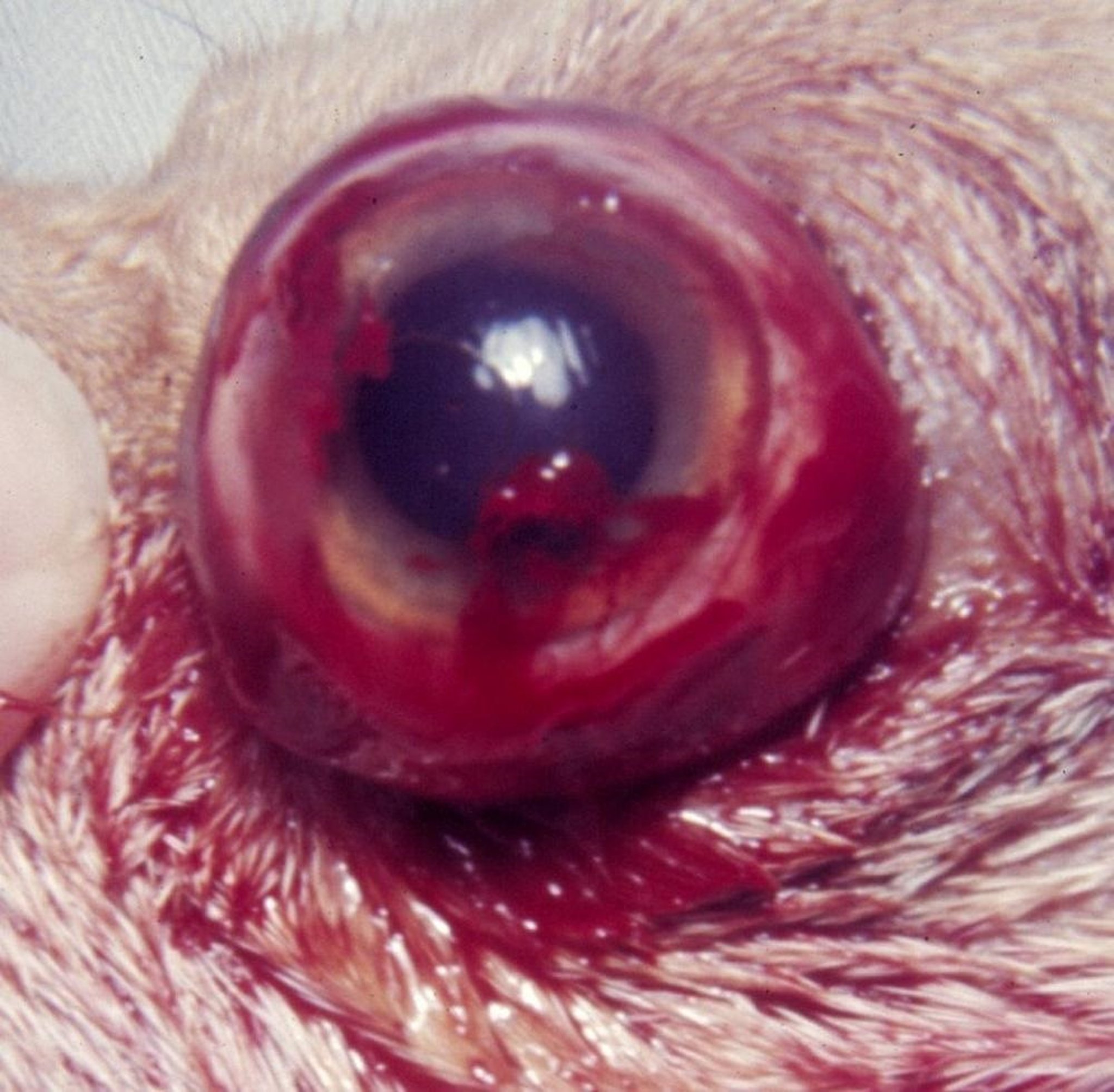Courtesy of K. Gelatt.
Courtesy of K. Gelatt.
In acute proptosis, the eye has been forced out of the orbit as a result of trauma; eyelid spasms and inversion of the eyelid margin prevent it from retracting. Proptosis is common in dogs and infrequent in cats. Prognosis depends on the extent of the trauma, breed of dog, depth of the orbit, duration of the proptosis, resting pupil size, condition of the exposure keratitis, and other periocular damage. In cats, proptosis usually results from severe trauma to the head; often, other facial bones are fractured. The globe should be replaced as soon as possible if the animal’s physical condition will permit induction of general anesthesia. Prior to replacement, a lateral canthotomy is required to allow replacement of the proptosed globe. This is followed by multiple, split-thickness horizontal mattress sutures in the eyelid margin. Treatment consists of administering systemic antimicrobials, systemic anti-inflammatory agents, and systemic pain medication, combined with topical antimicrobials and mydriatics. Although the prognosis for retention of vision is guarded, the globe can usually be saved.

